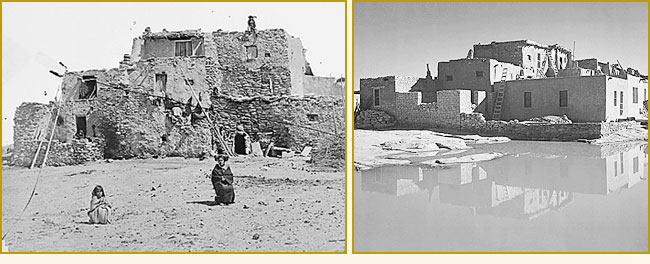
Post-Migration: A.D. 1300 to 1950
Post means "after." The Post-Migration period is the time after the Pueblo Indians migrated from the Mesa Verde region in the late A.D. 1200s, but before the Modern period. |
When the Pueblo people of the Mesa Verde region migrated to Arizona and New Mexico, they joined other Pueblo people who were already living in those places. |
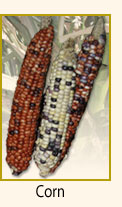 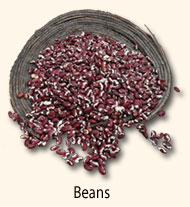 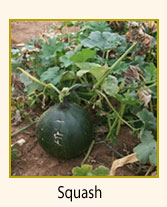
They still grew corn, beans, and squash. |
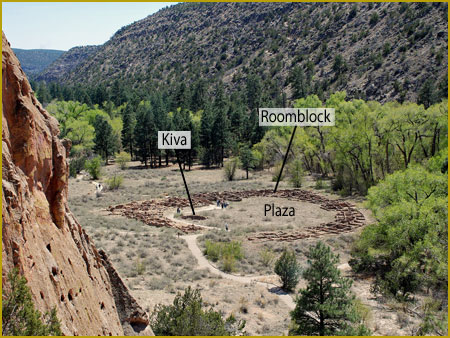
This pueblo in New Mexico was built in the late
A.D. 1300s, and people
They continued to live in villages that had one or more roomblocks, kivas, and plazas. |
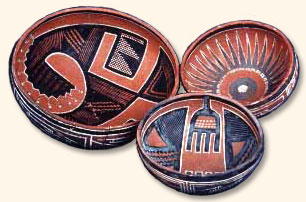
They made beautiful pottery, including some painted more than one color. |

|
But much changed in the A.D. 1500s, when Spanish explorers and missionaries settled in New Mexico, threatening the very existence of the Pueblo people. |
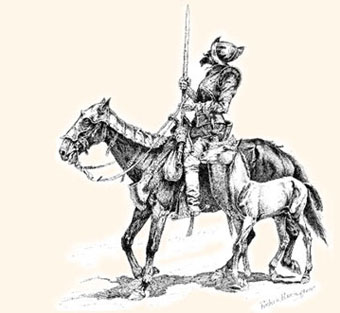
A Spanish conquistador. Conquistador is Spanish for The Spanish brought deadly diseases from Europe that native peoples had never been exposed to before. In addition, the Spanish wanted to impose their customs on the Pueblo people, which resulted in many conflicts. Within about 100 years of the Spanish arrival, disease and violence had killed at least half the Pueblo population. In 1680, the Pueblo people rebelled and drove the Spanish out of New Mexico. This rebellion is called the Pueblo Revolt. It was successful for 12 years. But in 1692, the Spanish returned. For the next 129 years, they controlled much of the Southwest. In addition to horses, what domesticated animals did the Spanish bring to the Americas? How many Pueblo villages remained at the end of the Post-Migration period? |
In 1821, the Southwest became part of Mexico. Then, in 1848, it became part of the United States. Just like the Spanish before them, the U.S. government tried to change the Pueblo people. The government and some religious groups wanted Pueblo people to adopt American customs, including the English language and Christian religion. Pueblo and other native children were taken from their parents and forced to attend boarding schools. They were not allowed to return home for months or even years, and they were punished for speaking their own languages or practicing their own customs. It was a very difficult time in Pueblo history. |
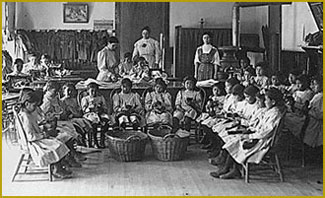
Pueblo girls in sewing class at boarding school, about 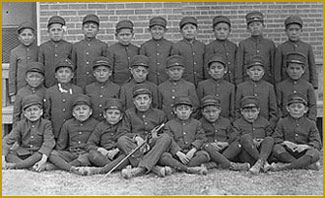
Pueblo boys in uniforms at boarding school, about 1910. |
|
When were the Pueblo Indians granted the right to vote? Through time, Pueblo people did adopt some Spanish, Mexican, and American customs. But they also continued to practice their traditional way of life. And they never forgot the Mesa Verde region, which was still an important part of their history and culture. They would travel back to the region to visit the sites and pay respect to their ancestors. |
 DONATE TODAY
DONATE TODAY
